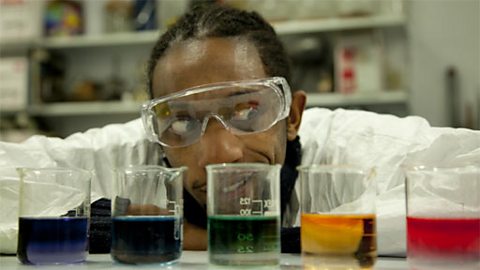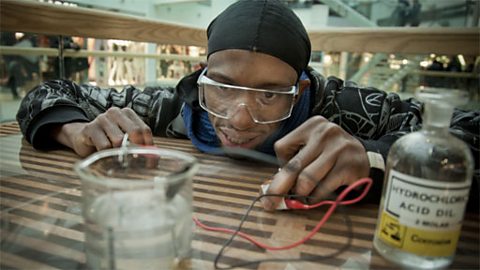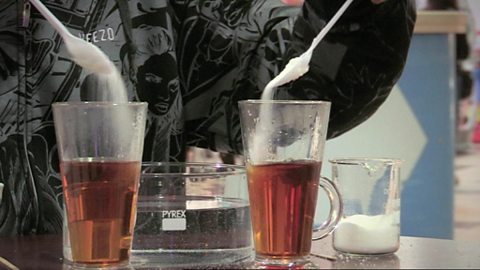Science presenter Jon Chase demonstrates an exothermic and an endothermic reaction, and explains how temperature changes can be used to identify which reaction is which.
The exothermic reaction is the crystallisation of sodium ethanoate, and the endothermic reaction is the reaction of barium hydroxide with ammonium chloride. Jon describes an easy way to remember the difference between an endothermic and exothermic reaction.
Teacher Notes
Students could investigate a variety of exothermic and endothermic reactions, including the exothermic reactions between hydrochloric acid and magnesium, nitric acid and sodium hydroxide, and anhydrous copper sulfate and water.
Endothermic reactions include solid citric acid and sodium hydrogencarbonate, and dissolving ammonium nitrate in water.
Demonstrate a spectacular reaction such as the thermite reaction or the oxidation of luminol and the endothermic reaction seen in the video, which is the reaction of solid barium hydroxide and solid ammonium chloride.
Ask students to explain their understanding of exothermic and endothermic reactions in terms of energy changes taking place.
Curriculum Notes
This short film will be relevant for teaching chemistry and science in general at KS3 and KS4 in England, Wales and Northern Ireland and National 4/5 in Scotland.
More from Chemistry Bites:
Acids and alkalis. video
How carbon dioxide levels in the atmosphere are causing the pH of the oceans to change.

Electrolysis and electroplating. video
A demonstration of electroplating a copper coin with zinc.

Rates of reactions. video
The effect of concentration, surface area, temperature and catalysts on reaction rate.

Solubility, solutes, solvents and solutions. video
Solubility of most solids increases with temperature, unlike most gases which decrease.
